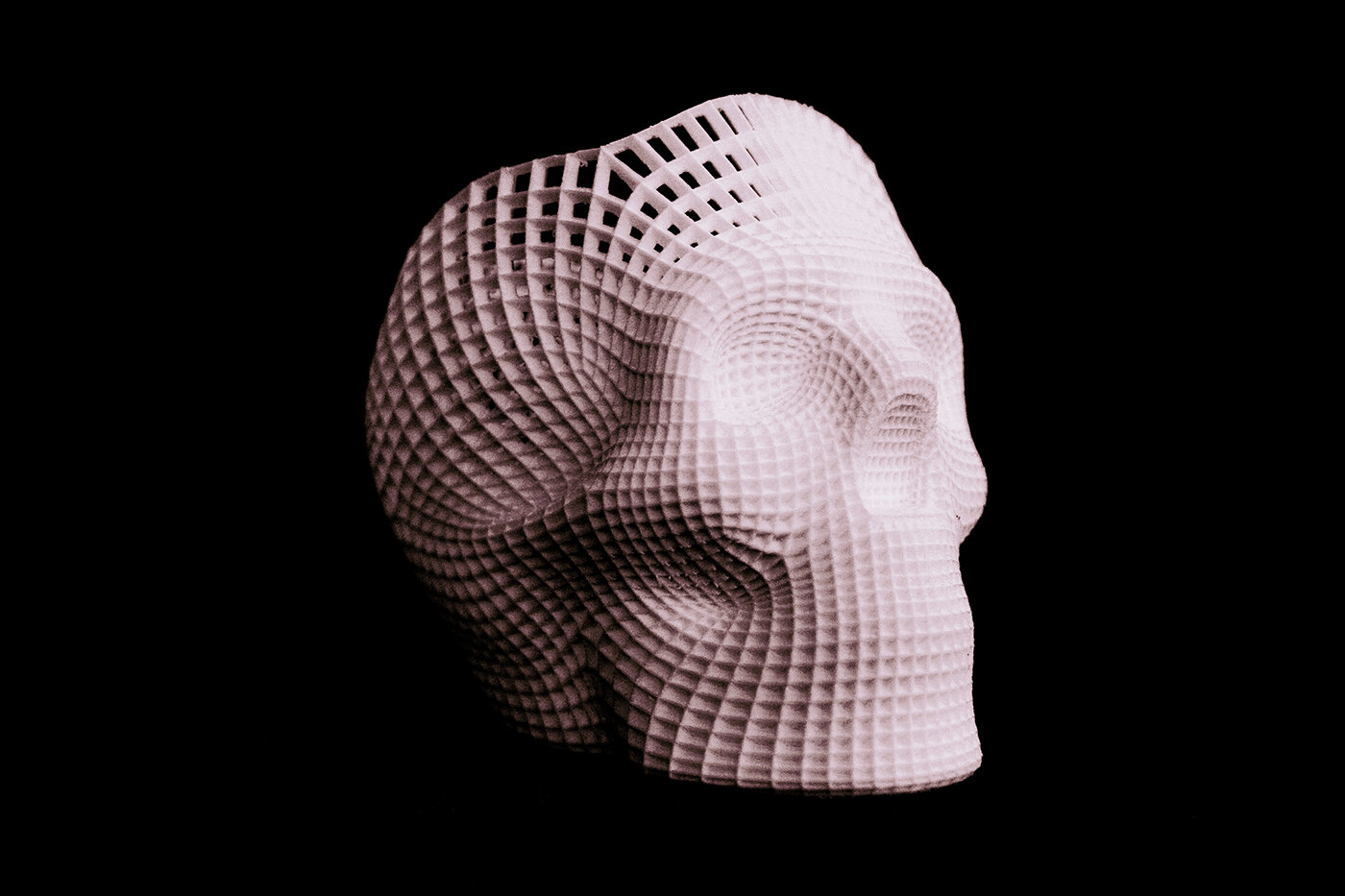On the Path Towards 3D Printing Directly in the Body
Both 3D imaging and 3D printing continue to advance at rapid rates. Might it someday be possible to print bone-like tissue scaffolds directly in a patient’s body using their own cells and a customized “ink” that promotes new tissue development? Original source photo by NeONBRAND on Unsplash
Researchers at the University of New South Wales in Sydney have created a novel ink for 3D printing—one with major advantages for doctors and patients. The idea of 3D printing implants using biocompatible materials is not new. Here at Himed, we’ve been working to improve biocompatible calcium phosphate scaffolding agents for ten years, both to help patients today and in preparation for on-demand implant printing.
As reported in the World Economic Forum, this new material and technique not only mimics bone structure, it contains living cells. Additionally, the ink hardens when placed in aqueous environments such as body fluids. When the ink is combined with substances containing living cells, it is able to fabricate bone-like tissues that incorporate the living cells into its structure.
The red hot promises of room temperature
In addition to the biocompatible advantages of integrating living cells into the implant structure, the newly-developed ink and printing technique can be performed at room temperature. While this may seem like a fairly basic achievement, the implications are huge.
With current technology, the vast majority of implant fabrication requires the use of high-temperature furnaces. Production must happen at off-site labs where such facilities exist. If bone-like implants can be fabricated without the use of specialized furnaces, they can be created far closer to the site of implantation—namely the surgery suite where the patient is receiving the procedure.
Made to order, and printed at the site
As the technology for 3D printing improves, it opens up the possibility that bone-like implants can one day be printed directly in the cavity of the patient. Using this novel ink, which would incorporate the patient's own cells, pieces of bone that are removed during surgery could be replaced via printing directly in the cavity.
The implant would be created to the exact specifications required. It would be uniquely compatible with the surrounding tissue to speed healing. And it would include all of the benefits 3D printing offers—less wasted material, instant turn-around times, and a more efficient supply chain. All of which results in a better outcome for the patient.
Getting to know COBICS
The findings were published by the UNSW scientists this January in a paper in Advanced Functional Materials. They call the new technique “ceramic omnidirectional bioprinting in cell-suspensions” (COBICS). The ink they developed hardens in minutes when exposed to water. Though it’s referred to as an ink, it’s actually a dry material that technicians in the operating theater would “wash,” then mix with the patient’s living cells. The ink would then be extruded (ie, 3D printed) directly into the place where the implant is needed.
The possible applications are vast. In addition to bone-tissue replacement, the researchers noted COBICS’s possible use in disease modelling and drug screenings. The technique will prove particularly useful in treatments where large amounts of tissue is removed or damaged, such as in trauma situations and cancerous tissue removal.
A remarkable materials conversion
In a news release from the UNSW in Sydney, Dr Iman Roohani from UNSW’s School of Chemistry, a scientist behind the discovery and an author of the paper, describes the way the ink forms such a unique bone-like structure, saying:
“The ink takes advantage of a setting mechanism through the local nanocrystallization of its components in aqueous environments, converting the inorganic ink to mechanically interlocked bone apatite nanocrystals.”
The material converts to a structure that’s similar to bone, and only begins the conversion when it’s exposed to body fluids. That leaves the surgeon or researcher using the ink the important ability to work with the substance easily without it setting before he or she is ready.
The next step for the scientists behind the discovery is in vivo animal testing to find out whether the living cells in the COBICS technique will continue to grow after implantation in a living body.
If the tests prove successful, this remarkable technique could help better care for patients in need of bone replacement. One day, a surgery for bone implants will potentially require fewer steps, fewer resources, and result in quicker healing with living-cell implants directly printed in the body.
An exciting time to be in the biomaterials industry
For three decades now, Himed has provided biomaterials aimed at bone restoration. Seeing such a unique and promising breakthrough not only energizes us to continue with our own research, it makes us excited to be a part of such a dynamic and innovative field—one that will only continue to improve the lives of patients everywhere.

